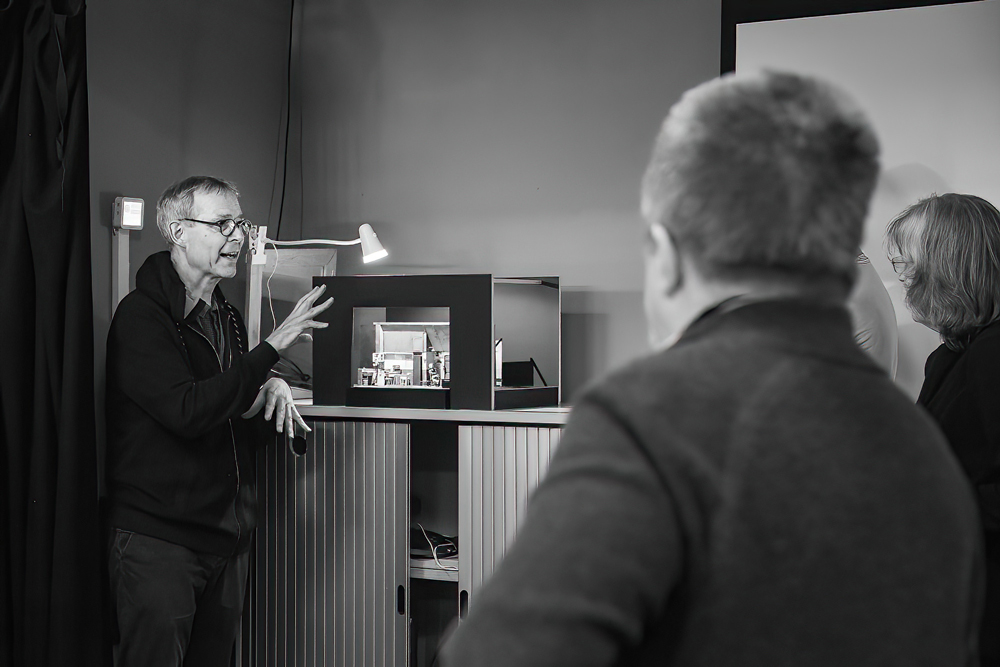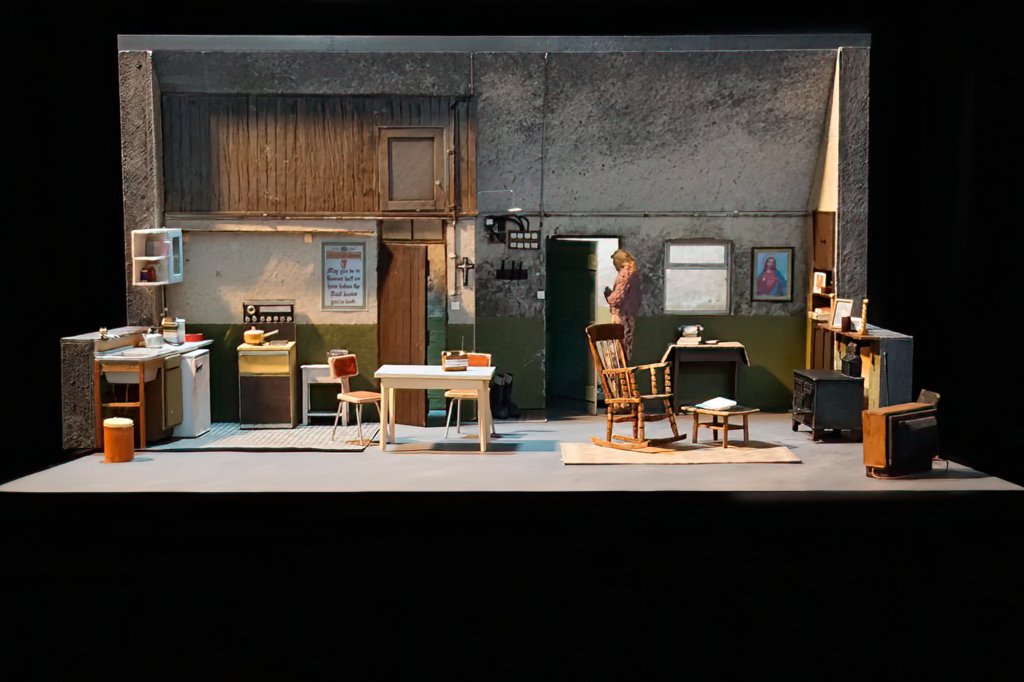Interview by Geraldine Emans

In this interview, I had the pleasure of talking to Ken Harrison who is the Set and Costume Designer for Rapture Theatre’s The Beauty Queen of Leenane.
What’s a typical day in your job like? What do you do on a daily basis?
There is no typical day, but you do start with the play and reading the play and discussing with the director the possible ways of staging it for the intended audience. But the actual detail comes down to the designer.
A typical day pre-production would be researching or making costume drawings or technical drawings for construction of a set. Or you may be model making because you make a scale model that will demonstrate your design that will be worked from later on. And having meetings with the director and the production team. This element means you are mostly working alone. Although in communication with others, it is mostly up to me to produce the design.
Another kind of day would be in production and that is different and there are several different kinds of people you will work with. Depending on the size of the company some have a whole team of people but sometimes the set and costume designer has to take on roles that are done by other professionals. You are generally helping to communicate and generate the design with other people, over how the design is executed e.g. carpenters for set and wardrobe department for costumes.
Another part of the role is helping provide guidance to stage management regarding things like props, so that all the visual elements of the performance come together as a whole.

How did you become interested in the job you do now? What drew you to the field?
I’d been an artist from a young age, and I completed a Fine Art degree. But I realised I needed to apply what I did as an artist and I thought my work lended itself well to the theatre so after my Fine Art degree I completed further training, a theatre design course. At an end of year exhibition, I was spotted by a designer who needed someone to take their place on a production in Belfast in Northern Ireland. That was 40 years ago, and I have been in the industry ever since.
Which qualifications did you need to get your job, or would someone need to get a job like yours?
Things have changed since I started. When I started, theatres were organised or operated differently because you were interviewed and given a job designing a production and your qualifications were taken into consideration.
Nowadays it is a bit less formal, and less about qualifications and more about experience. Your work might be spotted or your CV found on your website and you’ll be hired based on your track record, reliability, and reputation of being a good person to work with. It is sometimes even simply knowing the director or even someone well-known and highly regarded from outside the theatre industry. For certain types of theatre performances, randomness is preferred over requiring an experience designer.

What skills have you found to be vital to your job? Which skills help you do your job most effectively?
There’s quite a lot of skills involved, and these are more important that qualifications. Communication skills are very important – you have to be able to explain your ideas and work with people. Technical skills, you need to be able to produce very good technical drawing by hand or use a computer-aided drawing programme. Accuracy skills, so you can communicate with construction people who build the set. It really helps if you can draw – not so much as art – but to communicate your ideas e.g. in costume when they want something specific for the actor and the show and It really helps if you can sketch on the spot.
Understanding skills to appreciate what other people in the field do. For example, what a costume cutter does and how a costume fits together so that you can communicate with them in the language of fitting. Or for a scenic artist you need to be able to accurately understand colours, paint effects, how a certain look is achieved by using their terminology – it really helps if you speak their language.
What is the best part of your job and why?
It is nice when you get to the end of a design and hand it over to other people – it gives a sense of relief and feels good. Or when you get to the opening of a show, and sometimes you get good, meaningful feedback. The nicest ones are when an actor says your costume really helped them understand their role better. Or if the actor or director says the set worked really well for them. And, if your designs come together even better than how you imaged it – that’s also a good feeling.

